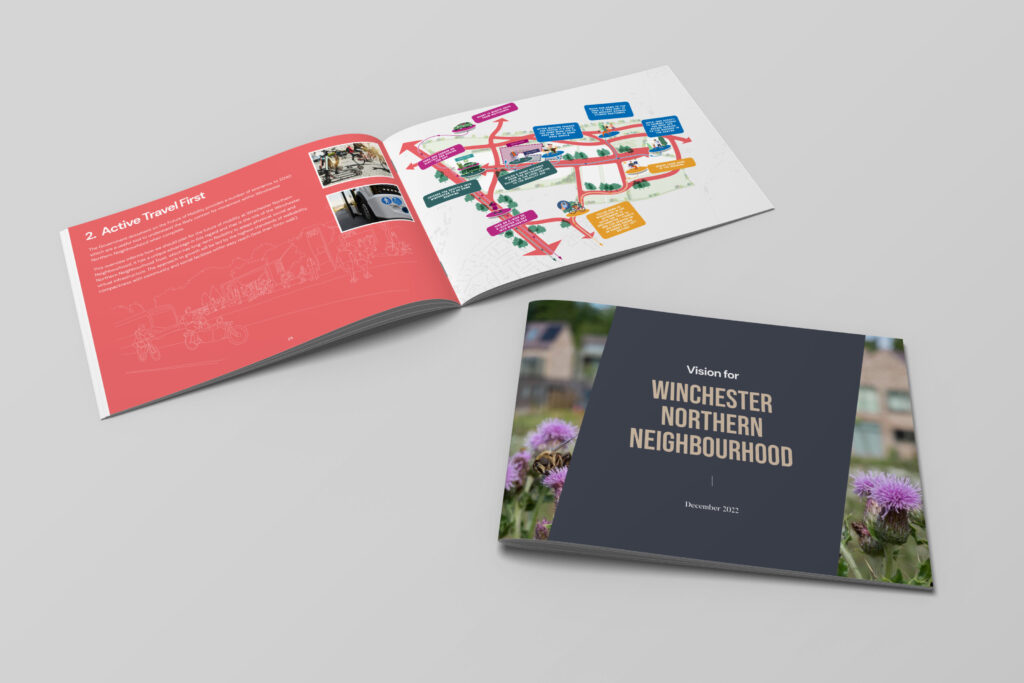The Future of Mobility Hubs
Read any article or publication of note in the industry at the moment and you will more than likely find an impressive diagram or illustration at the top of the page, showing how you’ll jump out of your electric car ready to be fully charged on your return and straight onto an e-scooter or e-bike for hire which you can take you to where you need to go. If you’re really lucky you’ll be able to hop on some autonomous e-helicopter thing that will deliver Amazon packages on its way.
What actually is a Mobility Hub?
Think of it as an interchange, where a multitude of different transport modes can be located together and allow its users to easily switch from one to the other. It could be located outside a train station – with bus stops, e-bike hire and electric car club facilities (combined with traditional vehicle parking). It could be within a town centre – with parcel lockers and public information/facilities. Or, it could be within a neighbourhood hub (check out Ana’s great article here) – with an associated community/convenience offering. Primarily, there is never a one size fits all approach. The varying scale and facilities offered (both mobility and non-mobility related) will always look to complement the existing infrastructure and respond to key community destinations, promoting activity and inclusion to bring people together.
Why are they important?
The Collaborative Mobility Hub (the national organisation for shared transport, a charity for promoting its social, economic and environmental benefits) gives a great overview of benefits on why Mobility Hubs are key to future sustainable transportation – from reducing car dominance, improving transitions between core public transport and shared services (first or last mile connections) and improving the public realm. If 20 minute neighbourhoods are the future, Mobility Hubs will be the glue that help facilitate sustainable trips and make them a success.
Case Study
A recently completed representation for the ‘Winchester Northern Neighbourhood’ allowed us to challenge the opportunities available to the City Council, and their preparation of a new district wide new Local Plan.

An informed, robust, and sustainable spatial strategy was required that was critical to ensure that the qualities that make Winchester the place that it is are preserved and enhanced while also embracing a positive sustainable strategy that makes provision for well-planned, resourced, coordinated, and responsive growth. The strategy’s active travel first approach was designed to meet the specific needs of the community, catering for emerging lifestyles, economic, energy and mobility requirements. Existing natural assets (field patterns/hedgerows/ woodland blocks) forged a ‘green grid’ of biodiverse green corridors into the landscape, and would allow residents to safely walk and cycle to key destinations within the site.
A primary Mobility Hub for commuters arriving from surrounding settlements would facilitate electric Shuttle Bus services or e-bike hire for onward trips to the City Centre via a new dedicated sustainable travel corridor along the Andover Road. A secondary Mobility Hub, located in the heart of the development would be community-led, and offer additional services (alongside e-bike & e-cargo hire/charging/secure parking) such as cafe & convenience, parcel lockers and home-work hub space.
Next steps
To support future travel habits, convenience and user experience are key. Safe, dedicated cycling and walking routes for work, school or simple day to day activities will encourage internalisation of trips for residents and sustainable choices for commuters. Mobility Hubs of the future give us the opportunity to rethink our current methods of transportation, and help to nurture healthy streets and vibrant neighbourhoods.







